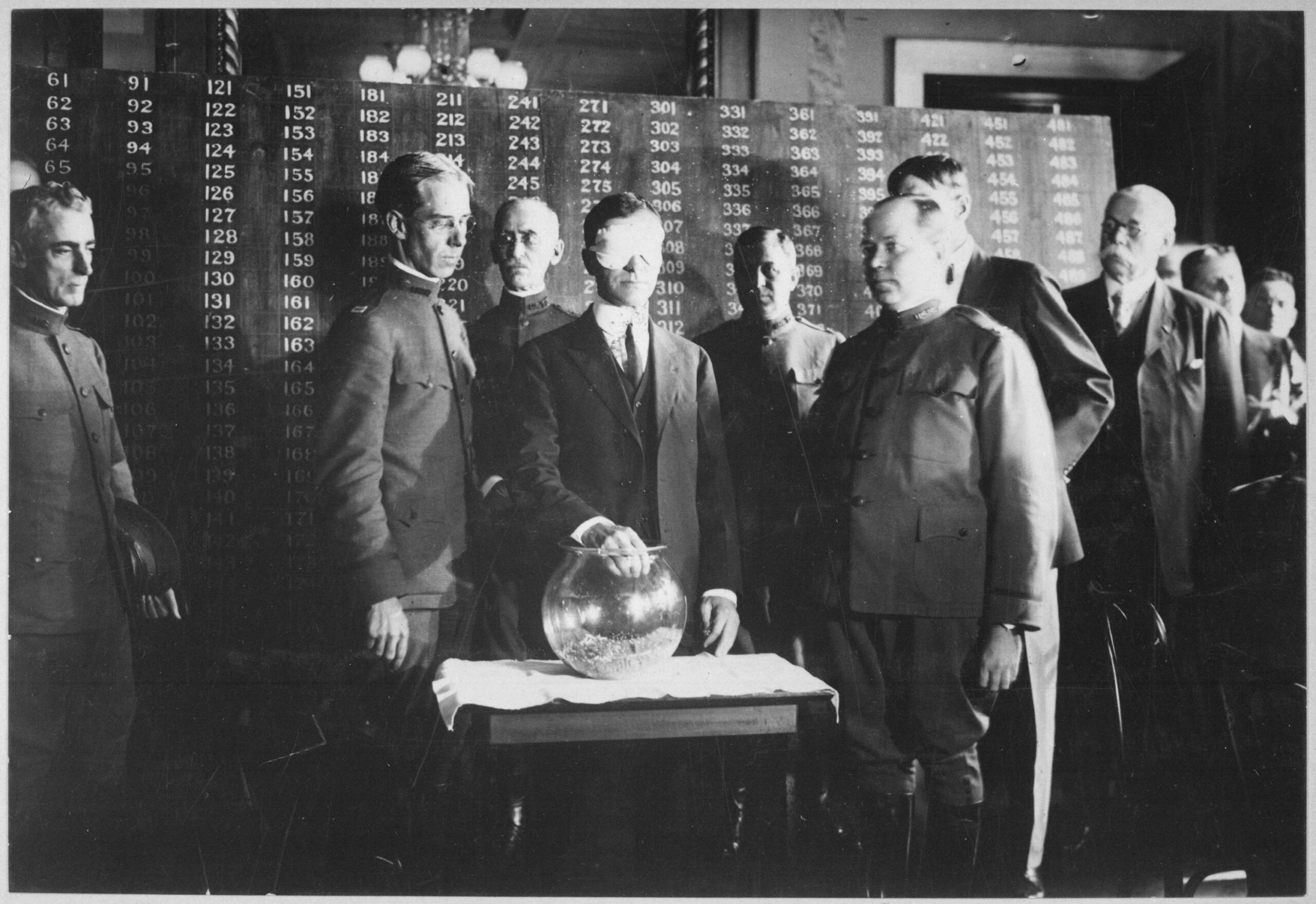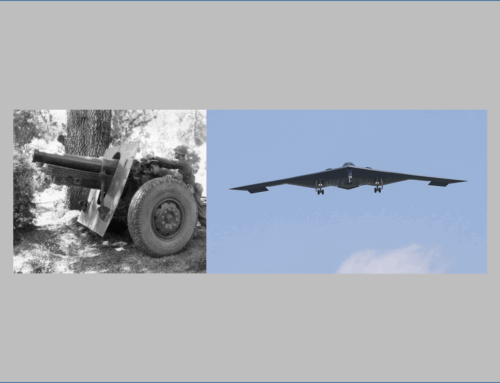Ancestry’s U.S. World War I Civilian Draft Registrations, 1917-1918 database
Published: 2 October 2023
via the Ancestry.com web site

Secretary of War Newton Baker draws the first draft number on 20 July 1917.
This database contains an index and images of World War I draft registration cards completed by approximately 24 million men living in the U.S. in 1917 and 1918. Information that may be found for an individual includes: name, place of residence, date and place of birth, race, country of citizenship, occupation, and employer.
About U.S., World War I Civilian Draft Registrations, 1917-1918
In 1917 and 1918, approximately 24 million men, (98 percent of men present in America), born between 1873 and 1900 completed draft registration cards. During these two years, three registration days were held in each district where the registrant completed the registration card. Information found on these cards generally included, among other information, birth date, birth location, father’s birthplace, and the address of next of kin. This civilian registration is often confused with induction into the military; however, only a small percentage of these men were actually called up for military service.

World War I Draft Registration Card for a young man in Boston named George Herman Ruth.
Originally posted to Ancestry.com in January of 1998 and taken from the original draft cards, this database provides information on some of the men registered. This update, part of an ongoing project, adds over 300,000 names to the previously posted database and brings the total number of names provided to 1.2 million. It adds information on registrants from Florida, Mississippi, and South Dakota.
It should be noted that aliens were required to register but were not subject to induction into the American military. Persons already in the military did not register. Recent Italian emigrants wrote their last names first, resulting in some cards being filed under first names. Cards of Hispanics may be filed under their mother’s maiden name surname if the registrant gave both parents’ surnames. Also, men who resided in British territories sometimes listed themselves simply as British citizens without noting their origin in Canada, Australia, Ireland, Jamaica, etc. Illiterate men were unable to spell their names and birth location, so researchers should be quite flexible in searching for the spelling of names of illiterate men.
In 1917 and 1918, approximately 24 million men born between 1873 and 1900 completed draft registration cards. Those who are not familiar with draft procedures often confuse this civilian registration with induction into the military. In reality, a minority of those civilian men who registered were ever called up for military service.
The draft was essential in raising the large numbers of men needed. Voluntary enlistment had not produced the needed number. Establishment of a draft was controversial in both the U.S. and Britain. President Wilson proposed the American draft and characterized it as necessary to make “shirkers” play their part in the war. This argument won over key swing votes in Congress.
Aliens residing in the United States were required to register for the draft although they were not subject to induction into the American military. In some frontier locations, such as Alaska, aliens formed the majority of registrants.
Men already on active duty in the military were excluded from draft registration. Because some men who completed draft cards later voluntarily enlisted, it is difficult to determine exactly how many active duty military men never completed a draft card, but the number would be between 300,000 and 600,000. Registration of eligible men has been determined to be close to 100%, which means that about 98% of adult men under age 46 living in the U.S. in 1917-18 completed registration cards.
Read the entire article on the Ancestry.com web site.
External Web Site Notice: This page contains information directly presented from an external source. The terms and conditions of this page may not be the same as those of this website. Click here to read the full disclaimer notice for external web sites. Thank you.



